Articles
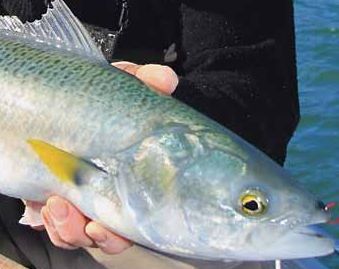 Presented from Issue 100
Presented from Issue 100
In Tasmania, larger Australian Salmon over two pounds are often called Black Back Salmon while the smaller models are known as Cocky Salmon. These fish are a valuable and much loved light tackle sports fish that are enjoyed by both land based and boating anglers all around Tasmania. They are a common catch in our estuaries, along our beaches and rocky headlands, and around the many small islands. They are a schooling fish that are constantly on the move along our coastlines, feeding predominantly on krill and small baitfish. They can be found in an estuary or along a particular part of the coast one week and then gone the next, as they move with the changing tides that influence the food they eat. Their presence rarely goes unnoticed when they turn up, as reports of anglers success quickly filters through the local angling community who gather in large numbers to make the most of these fantastic fish.
- Written by Stephen Smith - Rubicon Web and Technology Training
- Parent Category: Saltwater and Estuary Fishing
- Category: Australian Salmon
- Hits: 10108
Presented from Issue 100
For adventurous trout anglers springtime and early summer is the time to start thinking about heading out to the area officially known as the Central Plateau Conservation Area or simply to most of us as the Western Lakes.
This area boasts world class angling opportunities in rugged wilderness setting. For many fishermen their sole exposure to the western lakes region is the pocket of waters in the eastern edge of the CPCA known as the “19 Lagoons”. While these lakes and lagoons always provide reliable fishing opportunities, in this modern age it is hard to get a water or even a short section of shoreline to yourself particularly if you are restricted to weekend trips. For those of us seeking solitude and also adventure, venturing further out into the wilderness is a must.
Simon Tueon (Chewy) and I recently shared one such adventure in to this magnificent wilderness fishery. Here is our story….
- Written by Stephen Smith - Rubicon Web and Technology Training
- Parent Category: Lakes
- Category: Western Lakes
- Hits: 6058
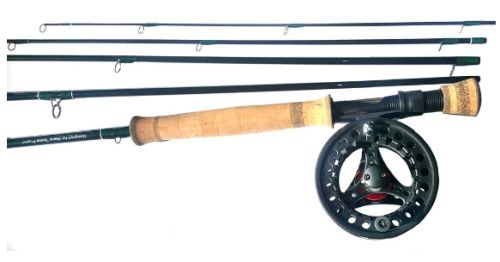 #6 ROD AND 7/8 ALLOY REEL SALT OR FRESHWATER OUTFIT
#6 ROD AND 7/8 ALLOY REEL SALT OR FRESHWATER OUTFIT
$280.00 (Was $420.00) - 33% Off. Hurry, there are only 11 item(s) left!
This is outstanding value for money. It is a great outfit for lake fishing as a longer rod gives great control.
Perfect for lake fishing, using sinking, or sink tip lines from a boat. Casting floating, sinking or sink tip lines is a breeze. You also get and better lift and hang at the boat. This is a strong #6 that will cast a line into the next postcode and will cope with a #7 line easily.
Purchase it here at the Essential Fly Fisher
- Written by Stephen Smith - Rubicon Web and Technology Training
- Parent Category: Articles
- Category: Tackle, Boats and other Equipment
- Hits: 6854
Presented from Issue 99
Early season fishing can be very challenging. Too challenging for this mere mortal of a fishing guide so I don’t like to guide before October. You see, I have a problem taking money from clients for what I consider mostly to be sub-standard (read sub- surface) fishing.
My clients love sight fishing on warm balmy days. Whilst early season shallow water tailers can offer great sport on lake margins and flooded river edges the weather is anything but balmy and the sport is particularly unreliable.
If you are Johnny on the spot, you have good local knowledge of water levels and conditions and you are not scared of frosty, foggy early mornings, then by all means be my guest. You may just find some of the best fishing of the season.
- Written by Stephen Smith - Rubicon Web and Technology Training
- Parent Category: Articles
- Category: Trout Fishing
- Hits: 4644
Presented from Issue 99
Peter Broomhall’s tips for trout season opening day success on a few of my favourite fisheries
For Tasmanian trout anglers the first Saturday in August is the culmination of a gradual build up in anticipation that started a few weeks beforehand. During this time rods have been checked, reels oiled, lines renewed, leaders retied, hooks sharpened, waders checked for leaks and tackle and fly boxes restocked. In some extreme cases this has been repeated many times over...
- Written by Stephen Smith - Rubicon Web and Technology Training
- Parent Category: Articles
- Category: Trout Fishing
- Hits: 3939
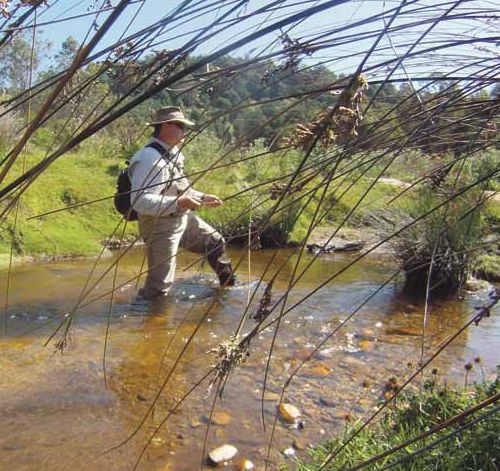 Presented from Issue 99
Presented from Issue 99
For most East Coast anglers the thought of chasing a few trout usually conjures up images of an extended trip to the central highlands, hours of driving, cool temperatures and long hours on the water to make the most of the trip.
However there is some great trout fishing options a lot closer to home than many would think with more than enough variety to satisfy even the most discerning of trout anglers.
With a good mix of river, lake and dam fishing there is something for everyone.
If heading to the rivers my early season recommendations would be definitely some upstream worm fishing in the faster water and small Wattyl Grubs and worms in the slower pools for those wishing to bait fish. A big bunch of scrub worms thread onto a #6 bronze bait holder hook and lobbed unweighted upstream into the tail of runs and eddies is a dynamite technique. If there has been some seasonal rain and the river has broken its banks then its prime time for the worm fisherman, take advantage of the water rising into normally dry drains and into paddocks as the Trout follow and gorge themselves on drowned insects and worms.
- Written by Stephen Smith - Rubicon Web and Technology Training
- Parent Category: Saltwater and Estuary Fishing
- Category: East Coast
- Hits: 16536
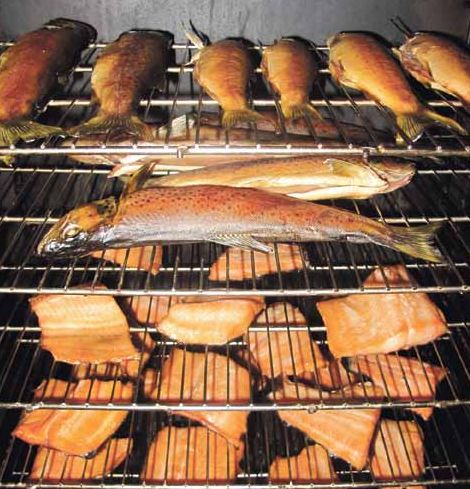 Presented from Issue 99
Presented from Issue 99
I have been smoking fish since I was a child. My European background meant that I learned these skills from an early age, from my father. Using a homemade wood-fired hot smoker, we would smoke eels predominantly, but sometimes trout too. My ‘backyard fish smoking’ apprenticeship lasted for years; however, when I was 12 years old, my father was finally happy to leave me in charge of the whole process.
To this day, I have maintained a keen interest in smoking fish. The only difference is that now, given my keen interest in fishing for them, I primarily smoke trout. Over the years, I have made several homemade fish smokers, and have smoked a variety of fish. In the early days, I stuck religiously to the traditional salt plus water brine; however, in more recent years, I have been experimenting with lots of different brine recipes.
Part of the secret to getting any smoked fish right is the brine. It is the first part of the ‘preserving’ or ‘curing’ process and is a crucial step that cannot be overlooked. Realistically, a simple mix of salt plus water is all that is required to make a basic brine solution. However, there are better recipes out there for those who want to go a step further and make something really special!
- Written by Stephen Smith - Rubicon Web and Technology Training
- Parent Category: Articles
- Category: Cooking Fish
- Hits: 12496
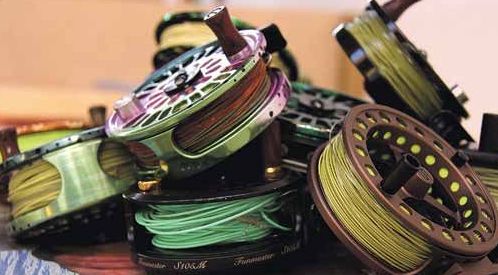 Presented from Issue 99
Presented from Issue 99
I have something to confess, I am a tackle junkie. When it comes to fly fishing gear I try and collect whatever I can, whenever I can. Doesn’t make me very popular at times I must admit but I’m afraid that is just the way it is. My current passion is for collecting different styles of chest/vest packs but I do have a soft spot for a nice reel. A fly reel is probably more important to our kit than a pack lets be honest, you can always throw a box of flies in your pocket if needed and go fishing. But if there is no fly reel locked on to the end of your favourite rod its going to be a tough day on the water!. Over the years I have collected and gotten rid of a fair few fly reels. Some brilliant, some pretty ordinary to tell you the truth.
- Written by Stephen Smith - Rubicon Web and Technology Training
- Parent Category: Articles
- Category: Fly Fishing
- Hits: 5622
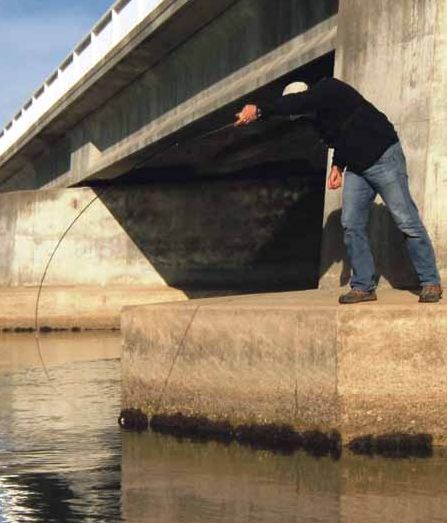 Presented from Issue 99
Presented from Issue 99
The annual spawning run or should I say flood of bream to the Scamander River is well underway. Earlier in autumn small schools of adult fish accumulated around the snags in the lower channel of Georges Bay ready for the long run south. When their numbers built up they made the mad dash down the coast and at times could be seen skirting the rocks of St Helens Point as they went.
Along the way they were joined by fish from Dianas Basin and Wrinklers Lagoon when these lagoons were open to the sea. At the same time fish travelled north from Four Mile Creek and Henderson’s Lagoon massing in the surf at the mouth of the river. At the top of the incoming tide fish moved in through the mouth of the river and gathered around the best two snags the Scamander River has to offer- the bridges. Now in late winter, their destinations are the long stretches of brackish water that will provide the right environment for the food their progeny will need after they hatch.
- Written by Stephen Smith - Rubicon Web and Technology Training
- Parent Category: Saltwater and Estuary Fishing
- Category: Bream
- Hits: 11054
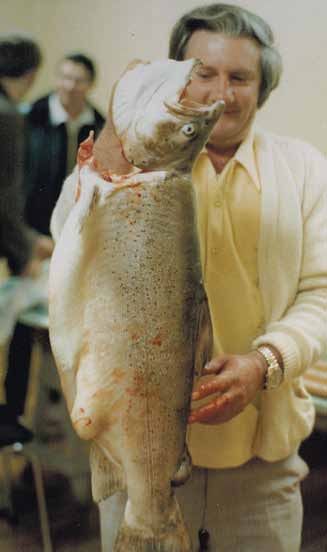 Presented from Issue 99
Presented from Issue 99
Lake Pedder. It used to be a good fishery right? Wrong, it was an exceptional fishery. Through the late 70s and early 80s the trout from this iconic south west water averaged an astonishing 4kg. That was the average weight not the good fish but the average weight. There has never been a fishery like it and there never is likely to be ever again.
What does surprise many is it’s a great fishery now. The trout are nothing like those of years gone by but they are in great condition, fight hard and in numbers that would be astounding if it could ever be calculated. Large bags are common and the quality of fish is very good. So often when it comes up in conversation people are surprised to hear it offers some great fishing to all artificial methods. And most always add that they’ve never been but have always wanted to make the trip out.
It’s well worth it, the scenery alone is unparalleled, panoramas that extend 360 degrees when you’re out on the water. Some areas of the lake it’s breath taking at times. For someone new to the water the fishing possibilities are much the same. You can round a point and be mesmerized by the bay in front of you, flooded tea tree sloping banks into weed rich water, fish rising, sometimes clear of the water chasing damselfly on the wing, only to go around the next point and see it open up again into a better looking bay and another and so on.
- Written by Stephen Smith - Rubicon Web and Technology Training
- Parent Category: Lakes
- Category: Lake Pedder and Gordon
- Hits: 9291
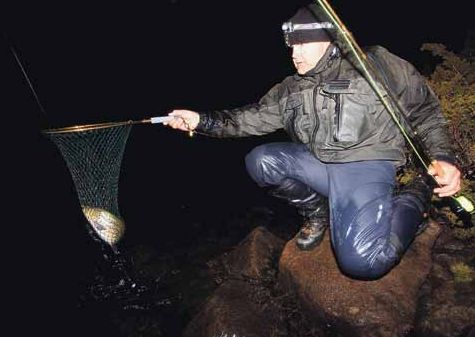 Presented from Issue 99
Presented from Issue 99
The Western Lakes can be a tough place to catch a fish, especially if you’re limiting yourself to sight fishing only. There are many influencing factors that can contribute to seeing very few fish during the day. We see fish in the shallows because there is often some kind of food present that brings them in close to shore. So if there is no food, they really have no reason to leave the security and food rich environment of the deeper water. During low water levels and high water temperatures in late summer, trout will often shelter under rocks during the heat of the day and only venture out late in the evening and into the night to feed. These are the days when you can walk all day and only seen one or two fish.
- Written by Stephen Smith - Rubicon Web and Technology Training
- Parent Category: Lakes
- Category: Western Lakes
- Hits: 5906
Subcategories
Rivers 305
Lakes 439
Events 111
Estuary Fishing 112
Other 26
Fly Fishing 67
Trout Fishing 250
Jan’s Flies 50
Cooking Fish 19
Fishing Information 29
Handy information and links to fisheries,weather etc
Fishing Books 8
Fishing books
Videos 5
Please select a video from the list below
Note: All videos use a lot of download data - please be aware of this.
Current TFBN
Click above for current issue content. The current issue of TFBN is extensive and topical. In Tackle Stores, Newsagents and by subscription.
Delivered to your door for $48 for 2 years (8 issues). To subscribe, send Mike $48 via www.paypal.com.au . (Basic instructions are here) The email is at Contact Us. Your address will be included from PayPal.
Or phone Mike with your c/c handy on 0418129949
Please ensure your details are correct, for Mike to organise delivery.
TFBN Newsletter Sign up Form
Why not submit an article ?
When you have finished for the day, why not have a brag about the ones that didn't get away! Send Mike an article on your fishing (Click here for contact details), and we'll get it published here. Have fun fishing - tasfish.com
Category Descriptions
Here is a list of all of the Article Categories. The number in Brackets, eg (13) is the number of articles. Click on Derwent River and all articles relating to the Derwent will be displayed in the central area.
Articles by Category
-
Rivers (3)
-
Saltwater and Estuary Fishing (149)
-
Kayak Fishing (34)
-
Lakes (1)
-
Great Lake (62)
-
Lake Leake (52)
-
Woods Lake (16)
-
Lake Augusta (11)
-
Huntsman Lake (13)
-
Lake Pedder and Gordon (10)
-
Lake Dulverton (5)
-
Lake Crescent (6)
-
Tooms Lake (10)
-
Lake Mackintosh (2)
-
Lake Barrington (5)
-
Little Lake (8)
-
Meadowbank Lake (5)
-
Lake King William (7)
-
Lake St Clair (2)
-
Western Lakes (12)
-
Arthurs Lake (35)
-
Lake Echo (7)
-
Four Springs (54)
-
Lake Sorell (7)
-
Lake Burbury (6)
-
Other Lakes (57)
-
Brushy Lagoon (18)
-
Little Pine Lagoon (5)
-
Penstock Lagoon (16)
-
Brumbys Creek (7)
-
-
Events (48)
-
Estuary Fishing (0)
-
Coastal Catches (46)
-
Super Trawler (46)
-
IFS, DPIPWE, MAST and Peak Bodies (435)
-
Commercial Interests (98)
-
Other (24)
-
TFBN Back Issues (8)
-
Fly Fishing (67)
-
Trout Fishing (250)
-
Meteorology and Weather (8)
-
Jan’s Flies (50)
-
Tuna Fishing and other Game Fishing (86)
-
Cooking Fish (19)
-
Fishing Information (1)
-
Fishing Books (8)
-
Videos (5)
-
Tackle, Boats and other Equipment (146)
-
World Fly Fishing Championship 2019 (2)
Popular Tags
windyty.com
Visit https://www.windyty.com/
Rubicon Web and Technology Training
Hello everyone, I thought it would be a good time to introduce myself.
My name is Stephen Smith and I have been managing the website tasfish.com since May 2009.
It has been an epic journey of learning and discovery and I am indebted to Mike Stevens for his help, support and patience.
I am developing a new venture Rubicon Web and Technology Training ( www.rwtt.com.au ). The focus is two part, to develop websites for individuals and small business and to train people to effectively use technology in their everyday lives.
Please contact me via www.rwtt.com.au/contact-me/ for further information - Stephen Smith.
From the Archives ... (last chance)
"Angling is an art - Hannah Ledger
and an art worth your learning.."
Presented from Issue 112, October 2014
So said Izaak Walton in the 1600s. It seems that Burnie’s Hannah Ledger has combined angling with art rather well. Hannah is a fish fanatic, outdoor enthusiast and budding, self-taught artist. From as young as she can remember, she has always had crayon in hand, colouring book under arm and as she’s grown as a painter, jars full of paintbrushes and cupboards full of ready-to-go blank canvas’.
A country girl at heart, Hannah was schooled at Yolla District High School, a small ‘farm’ school in the states North West, then went on to Hellyer College where she was given the opportunity to really grow her art skills; And by grow, that meant skipping the classes that would probably have more an impact of getting her somewhere in life, like English and Math to spend every spare minute with the art teacher, painting or drawing.
As typical teenagers do, they make poor decisions- and after being accepted in to one of the countries top art schools, turned down the offer and decided to move to the big island, where she lived for 5 years working in what seemed ‘dead end’ retail.
Read more ...


